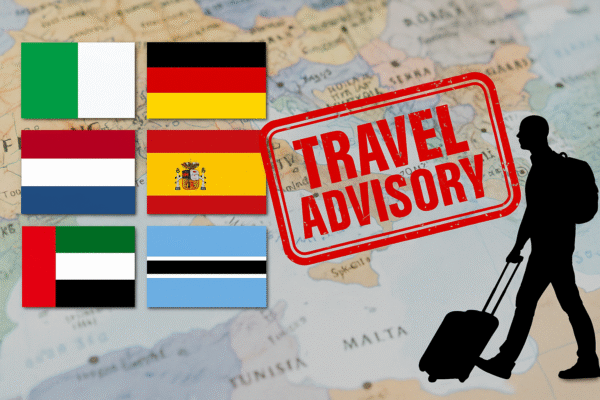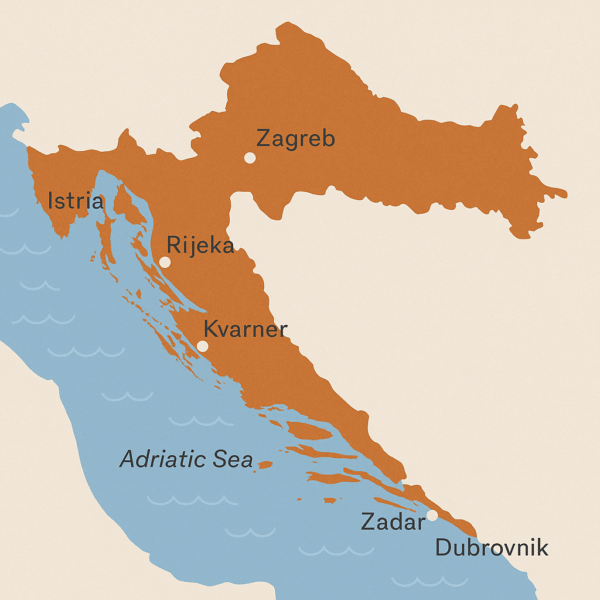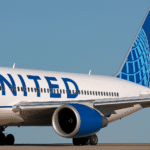Croatia has once again positioned itself as one of Europe’s most sought-after travel destinations in the summer of 2025. With its picturesque Adriatic coastline, charming medieval towns, and renowned cultural landmarks, the country continues to draw in millions of travelers from across the globe. However, while visitor numbers soar, the tourism sector faces the ongoing challenge of balancing high demand with competitive pricing strategies.
In August 2025 alone, more than 220,000 vacation rental owners across Croatia welcomed guests, marking a 12 percent increase compared to the same period last year. These hosts collectively contributed to an impressive 1.3 million recorded overnight stays, with occupancy rates in coastal regions averaging 91 percent. This milestone underscores Croatia’s strong appeal, particularly in regions like Istria and Kvarner, which experienced the fastest growth, while Dalmatia continued to remain a magnet for both international and domestic visitors.
Visitor Demographics: Europe Leads the Way
Germany maintained its position as Croatia’s leading source market, recording over 15 percent growth in arrivals compared to August 2024. Neighboring Austria and Slovenia also posted double-digit increases, reinforcing the country’s enduring popularity within Central Europe. One of the most notable shifts came from Denmark, which contributed an 18 percent rise in overnight stays, highlighting Scandinavia’s growing interest in Croatia’s coastal experiences.
The Netherlands and the Czech Republic also provided steady growth, with approximately seven percent increases each. Collectively, these numbers emphasize Croatia’s broad and diversified tourism base, drawing not only from its closest neighbors but also from northern Europe.
Pricing Pressures and Competitive Strategies
Despite strong demand, the perception of high costs remains a lingering issue for Croatia’s tourism industry. Some potential visitors are deterred by the belief that Croatia is more expensive than competing Mediterranean destinations such as Greece, Turkey, or Spain. This has placed greater pressure on operators to implement flexible pricing models and promotional packages.
Vacation rental owners and property operators have responded by offering discounts, value-added packages, and early booking incentives. These adjustments have proven effective in driving up occupancy rates and ensuring steady visitor flows during peak season. The success of these strategies highlights the importance of balancing affordability with quality to maintain Croatia’s competitive edge in the European travel market.
Experts argue that pricing must not only cover profitability but also align with travelers’ perceived value. As global tourism grows increasingly competitive, Croatia’s ability to adapt its pricing while promoting its unique cultural and natural assets will determine its long-term positioning.
Outlook for 2026 and Beyond
Looking ahead, industry analysts predict that early bookings for the 2026 summer season could exceed expectations, driven by rising demand from both returning and first-time visitors. Coastal towns such as Dubrovnik, Split, and Rijeka are expected to benefit the most, alongside smaller island destinations that continue to gain traction among international travelers.
Affordability will remain a critical driver of growth, and stakeholders across Croatia’s tourism ecosystem—rental owners, travel agencies, airlines, and local governments—are being urged to collaborate more closely. Enhanced marketing campaigns, early-season offers, and transparent pricing will play a decisive role in sustaining momentum.
The government’s role is equally significant, with continued investment in infrastructure, environmental protection, and cultural preservation reinforcing Croatia’s image as a high-quality yet accessible destination.
Balancing Growth with Traveler Expectations
Croatia’s tourism sector continues to navigate the delicate balance between rising demand and cost concerns. On one hand, the country’s coastline, dotted with historic cities, pristine beaches, and more than 1,000 islands, remains a compelling draw. On the other, travelers are increasingly cost-conscious, comparing destinations and making decisions based not just on beauty and culture but also on affordability.
This dynamic has created a situation where Croatia must adapt quickly. Countries offering cheaper packages or all-inclusive deals are challenging Croatia’s market share, particularly among family travelers. However, Croatia’s unique blend of heritage, natural landscapes, and authentic Mediterranean lifestyle provides an opportunity to differentiate itself beyond simple price comparisons.
Tourism as a Pillar of National Identity
For Croatia, tourism is not just an economic driver but also a reflection of its cultural identity. From the Roman ruins of Pula and the Gothic architecture of Zagreb, to the UNESCO-protected Old Town of Dubrovnik, the nation’s heritage has long captivated visitors. The Adriatic’s turquoise waters and vibrant islands only add to the allure.
In 2025, this cultural and natural wealth continues to be the foundation upon which Croatia builds its tourism future. With thoughtful strategies, Croatia can ensure that affordability does not come at the expense of quality or sustainability. Instead, it can create a model that satisfies both international visitors and local communities who depend on tourism as a livelihood.
Conclusion: Croatia’s Tourism Future
The summer of 2025 has demonstrated Croatia’s ability to attract growing numbers of visitors, with record-breaking overnight stays and double-digit increases from key European markets. Yet, the challenges of cost perception and competition remain central issues for the sector.
By implementing smarter pricing strategies, investing in cultural promotion, and strengthening industry cooperation, Croatia can continue to position itself as a premier Mediterranean destination. Its future lies not only in offering unforgettable experiences but also in ensuring that those experiences remain accessible to travelers of varying budgets.
As Croatia prepares for 2026 and beyond, the message is clear: sustainable growth, affordability, and cultural richness must go hand in hand to secure its place as one of Europe’s top travel destinations.
For more travel news like this, keep reading Global Travel Wire


















